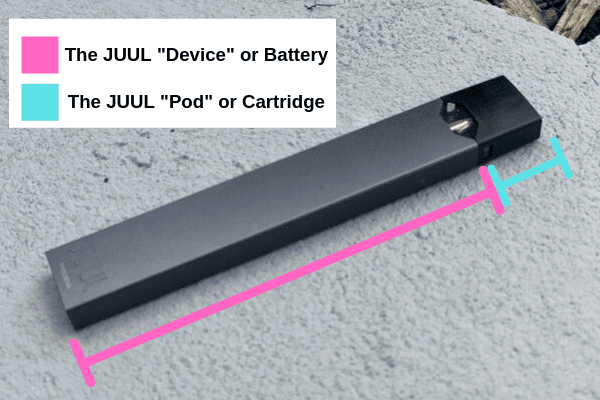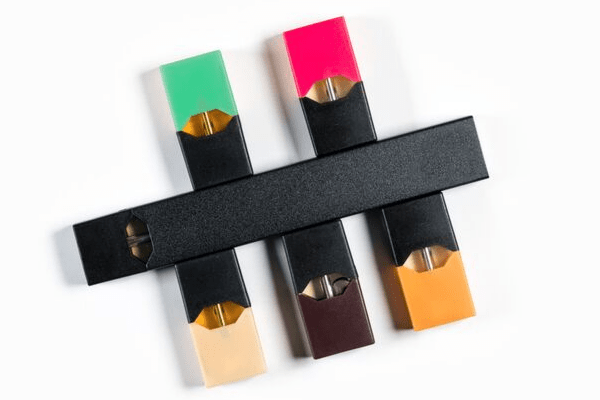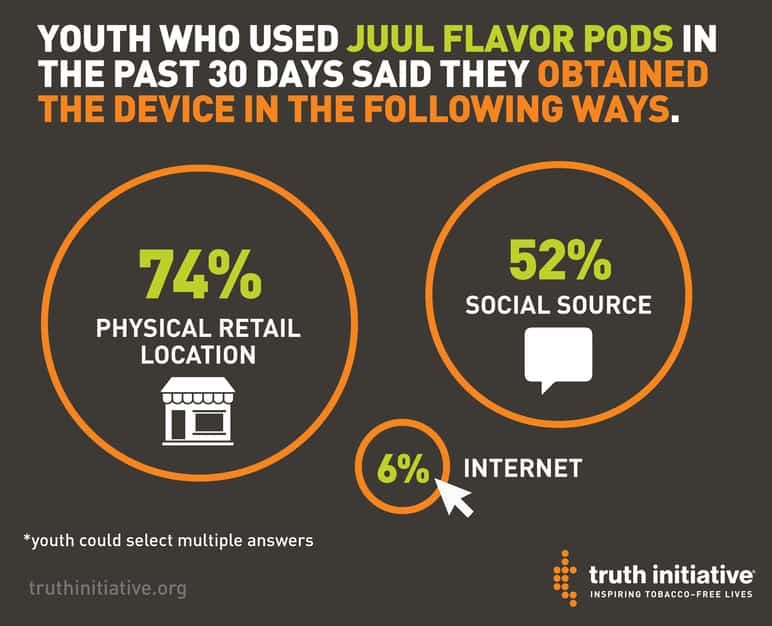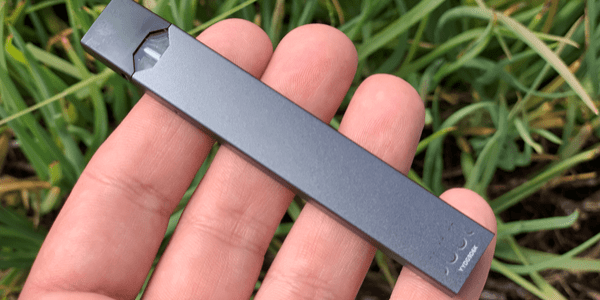There are only a handful of companies that achieve widespread recognition in such a short period of time. One of these companies is JUUL Labs®, the creators of the JUUL® vaporizers. JUUL Labs® was started in 2015 with a mission to help smokers quit.
However, the brand and its founders have been covered in controversy, from the ingredients in their JUUL® pods to underage children using their products. Here, we look deeper into JUUL®, what a JUUL® vaporizer is, and why the company has come under fire from lawmakers and parents.
The History Behind JUUL® Vaporizers
According to the JUUL website, the JUUL vaporizer that we would come to know was founded by Adam Bowen and James Monsees (1).
Both Adam and James were Stanford graduate smokers living in San Francisco looking for a “true” nicotine-rich alternative that didn't leave a lingering odor like cigarettes do (2).
The first company founded by Adam Bowen and James Monsees was named PAX Labs in 2007 (3). PAX Labs was a company focused on creating vaporizers and other electronic cigarette components.
Adam Bowen and James Monsees wanted to find a true smoking alternative that could deliver the nicotine rush users wanted without the smell or harsh smoke normally produced by a cigarette.
JUUL® was introduced into the marketplace by PAX Labs® in 2015 after receiving a United States patent for using nicotine salts inside of their now infamous JUUL® pods (3).
In 2017, the founders decided to spin JUUL® off into its own company, separate from PAX Labs®. This lead to the creation of JUUL Labs® on May 22nd, 2015.
Today, Adam Bowen serves as the Chief Technology Officer, or CTO, for JUUL®. His founding partner, James Monsees, serves as JUUL’s® Chief Product Officer, or CPO (1).
As the demand for JUUL® began to increase over time, the company began to expand rapidly. In September 2017, the company had just 200 employees. However, by December of 2017, the company grew to employ well over 1,500 people (3).
What Are JUUL® Vaporizers?
JUUL® is a form of electronic e-cigarette (or “vaporizer”) that can discreetly be carried around. One of the main benefits offered by JUUL® vaporizers is that unlike cigarettes, the product does not leave a lingering smoke-like odor which some find offensive (4). Additionally, the device is small and inconspicuous.
Unlike many other traditional e-cigarettes, JUUL® uses nicotine salts (known as protonated nicotine) from regular tobacco leaves (4).
It is believed that the company uses nicotine salts to help give users an experience more like smoking an actual cigarette when compared to other electronic cigarettes on the market.
What Are The Parts of a JUUL®?
Each JUUL® e-cigarette contains two main components: a “pod” along with a USB battery stick. Below, we go over in more detail about the two key components that make up a JUUL® e-cigarette (4).

1. JUUL® Pods
The JUUL® pod is the component of the vaporizer that contains the nicotine salts and flavorings that the user then inhales.
Sometimes referred to as a “cartridge” these JUUL® pods aim to deliver a nicotine peak in roughly 5 minutes or less.
Each JUUL® pod contains roughly the same amount of nicotine users can find in a traditional pack of cigarettes. In the United States, JUUL® sells their pods with up to 59mg/ml of nicotine, while in the European Union, the company is limited to selling JUUL® pods with just 20mg/ml (5).
Online, shoppers can choose between 5% and 3% nicotine strengths (5). These amounts of nicotine are substantially more than what is offered by other e-cigarette competitors.
JUUL pods are designed to give users roughly 200 puffs per pod.
JUUL® Pod Flavors
JUUL® pods come in a variety of flavors. Some examples of JUUL’s® most popular flavors include:
- Virginia Tobacco
- Mint
- Mango
- Creme
- Menthol
- Cucumber (5)
JUUL® states that these flavors are designed to help adult smokers quit smoking traditional cigarettes.
However, many in the community, including parents, allege that these flavors such as Mango and other fruity flavors are designed to attract underage children to their products.
What is Inside a JUUL® Pod?
According to JUUL.com, JUUL® pods contain an e-liquid with the following ingredients:
- Glycerol
- Propylene Glycol
- Natural Oils
- Extracts and flavor
- Nicotine
- Benzoic acid (5)

2. JUUL® Device Battery
The JUUL® device is the usb-rechargeable 200mAh battery that users attach to a JUUL® pod in order to provide the power needed to make a JUUL® work.
The device itself is small and discreet, much like the JUUL® pods. This can enable users, and in some cases, children, to hide the devices in their backpacks or purses.
Each JUUL® device comes with a standard USB-powered charging dock and a limited one year warranty (6). The charging time for a JUUL® device is roughly 1 hour to fully charge a completely empty battery. However, some users report that their JUUL® battery charges in 45 minutes or less.
This can actually be concerning since it may show that the batteries used in these JUUL® devices go under minimum quality control tests, as a 25% difference in charging time may be due to a poorly built battery.
Users can easily check the current charge of their JUUL® e-cigarette device by double-tapping the device with a pod inserted (6). Then the JUUL® device will present you with an indicator light, with red meaning low charge, yellow being a medium charge, and green being a highly charged battery.
How does a JUUL® Vaporizer Work?
In order to use a JUUL® vaporizer, the user needs to attach a JUUL® pod to the JUUL device, or battery (7).
Once the user begins to suck on the JUUL® device from the top of the pod, the USB battery sends an electrical power current through a series of coils that are located inside the JUUL® pod.
These coils then begin to heat up the e-liquid solution inside the pod rapidly and evenly. Thus, the e-juice begins to combust and turn into smoke, which the user then inhales.

Unlike many other vaporizers, JUUL® pods do not contain a “trigger” button which the user needs to push in order to activate the battery. Instead, a user simply needs to suck on the JUUL® pod in order to have the battery automatically heat the coil and create a reaction that results in the creation of smoke (7).
Once the user stops sucking or inhaling on the device, the battery shuts off and the combustion ceases.
How Are JUUL® Vaporizers Sold?
JUUL® sells their electronic cigarettes through various physical and online channels and in different forms or product offerings. Some of JUUL’s® most common products include:
The JUUL® Starter Kit
The JUUL® Starter Kit contains everything that a user would need in order to start using the JUUL® device. Each starter kit comes with a JUUL® Device (the battery), a USB charging dock, and 4 different JUUL® pods in 5% nicotine strength.
The four flavors of JUUL® pods included in the starter kit include Virginia Tobacco, Mint, Creme, and Mango. Typically, the starter kits retail from $49.99 to $64.99 on the JUUL® website.
JUUL® Replacement Pods
With each pod offering users close to 200 puffs, there will come a time when the cartridge, or JUUL® pod, will need to be replaced.
From the JUUL® website, users can enter the online store and find all flavors of JUUL® pods listed for sale. Users can then choose their nicotine strength, from 3% to 5%. The JUUL® pods are sold to users in packs of 2 or 4.
Where is JUUL® Sold?
With millions of Americans having used a JUUL vaporizer, the electronic cigarette is available at almost every smoke shop, gas station, and head shop in the United States. JUUL also sells their products online.
Depending on the state a person lives in, you must be 18 or 21 years of age to be able to legally purchase a JUUL pod.
JUUL® Controversies
In the past few years, JUUL® has transformed into one of America’s most controversial companies, with lawmakers and parents accusing the company of implementing a variety of tactics to attract underage children to their products.
Additionally, many consumers are now beginning to ask themselves about the true safety behind the JUUL® vaporizer.
JUUL® and Vaping Illnesses
In recent months, there has been a surge of reports of teens and young adults being hospitalized, and in some cases, dying, after heavy use of an electronic vaporizer. (8)
Currently, the Centers for Disease Control and Prevention (CDC) is investing how and why over 150 young adults have become hospitalized with severe lung ailments after vaping.
Although the agency does not have a definitive cause for the illnesses, each person hospitalized had used an e-cigarette like JUUL® (8).
Patients reported shortness of breath, chest pain, and nausea before they became hospitalized. So far, individuals in 15 states have become hospitalized. Many of these patients were otherwise healthy.
Although many young adults have suffered from lung ailments, vaping has also been linked to seizures and cardiovascular diseases in some patients (8).
A 2018 report by the National Academies of Sciences, Engineering, and Medicine found “There is conclusive evidence that in addition to nicotine, most e-cigarette products contain and emit numerous potentially toxic substances.” (9).
After the mass hospitalizations, the FDA had begun conducting testing to find the source or ingredient causing the diseases and medical conditions.
At this time, there is no definitive answer, but many experts believe it could be Vitamin E acetate or chemicals used in flavorings, such as cinnamaldehyde (used to provide a cinnamon-like flavor in e-cigarette products).
According to the Washington Post, the FDA is analyzing a broad range of chemicals used in vaping related products. This includes certain chemicals, THC, cutting agents, pesticides, poisons, and toxins. Currently, the FDA reports having over 100 samples available for testing (10).
Underage Sales of JUUL® to Minors
JUUL® has also come under fire for making it seemingly easy for underage children to obtain access to a JUUL® device. The Truth Initiative conducted a study on where young adults are purchasing JUUL® pods (10). The study found that in the last 30 days:
- 74% of underage children purchased a JUUL® pod from a physical store, such as a gas station or smoke shop.
- 52% of underage children purchased a JUUL® pod from a social source, which could include friends, classmates, and social media groups.
- 6% of users find the products through the internet, most likely from unregulated websites that do not ask for identification. Additionally, many websites selling JUUL® devices or pods are in China, with a high probability of counterfeits (11).

Source: The Truth Initiative - *The study allowed youth to select multiple answers when answering this survey.
In recent months, the FDA has issued multiple warning letters to various retailers for selling products to minors. Many of the online purchasers of JUUL® pods purchased them on sites such as eBay®.
However, now eBay® has also began diligently removing listings for all JUUL® pods. It is estimated that 89% of youth who attempt to purchase JUUL® pods online are successful at doing so (11).
Marketing JUUL® to Underage Children
JUUL® has also come under fire recently for marketing its products to minors. The House of Representatives heard testimony about how JUUL was targeting children, even in elementary schools (12).
Scientists and educators testified that representatives from JUUL® “met with students - with no teachers present” - and began discussing how the companies e-cigarettes were "totally safe”, according to a report by The New York Times.
It was found that JUUL® paid a charter school network to “design a curriculum for a student summer camp that would ‘teach children healthy lifestyles’”, according to the Seattle Times (12).
Bloomberg News soon found that JUUL® had spent well over $200,000 sponsoring “programs” in schools to convey its messaging directly to teenagers. Additionally, JUUL® used online influencers on platforms such as Instagram and Snapchat to promote its products (13).
In order to try and calm the flames, the CEO of JUUL® announced that JUUL® is now working with JUUL® vendors to implement an ID verification system that would prevent store cashiers and clerks from selling JUUL® products to underage shoppers (13).
Additionally, it would place a limit on the quantity a customer can by. This announcement came out after it was found that nearly 1 in 5 students in America has vaped within the last year.
Final Note
Many experts are now concerned that decades of progress fighting traditional cigarette companies may now be reversed thanks to electronic cigarettes and vaporizers such as JUUL®. With 1 in 5 American students having tried an electronic cigarette in the past year, many are now concerned about both the short-term and long-term effects these devices pose.
As investigators continue to evaluate JUUL’s® products and marketing tactics, hundreds of underage children have become hospitalized after use of an electronic cigarette. Although it may take investigators and regulatory agencies time to find a direct link, lawmakers have already stepped in by taking steps to limit JUUL’s® reach.
Becoming aware of the potential effects of JUUL® and how the company hooks customers on its products through creative marketing tactics can help you or a loved one avoid becoming sick or addicted to this unsafe product.
Sources:
- https://www.juul.com/our-story
- https://www.fastcompany.com/90263212/how-juul-went-from-a-stanford-thesis-to-16-billion-startup
- https://en.wikipedia.org/wiki/Pax_Labs
- https://www.juul.com/learn/discover
- https://www.juul.com/learn/pods
- https://www.juul.com/learn/device
- https://www.juul.com/learn/getstarted
- https://www.healthline.com/health-news/vaping-may-be-causing-acute-lung-damage-in-teens
- https://www.nap.edu/resource/24952/012318ecigaretteConclusionsbyEvidence.pdf
- https://www.washingtonpost.com/health/2019/09/05/contaminant-found-vaping-products-linked-deadly-lung-illnesses-state-federal-labs-show/
- https://truthinitiative.org/research-resources/emerging-tobacco-products/where-are-kids-getting-juul
- https://www.seattletimes.com/opinion/juul-is-marketing-nicotine-addiction-to-your-kid-right-under-your-nose/
- https://www.cbsnews.com/news/juul-labs-announces-id-verification-system-to-curb-underage-e-cigarette-vape-use/

